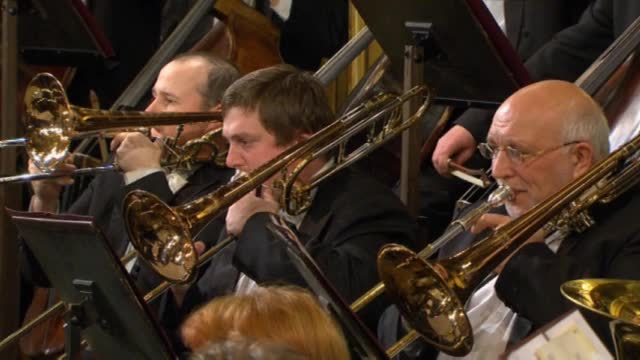
Trained originally at the Russian Academy of Military Engineering, Myaskovsky left the army in order to study at the St Petersburg Conservatory, where he befriended the young Prokofiev. His own teachers were Rimsky-Korsakov and Lyadov. He became professor of composition at Moscow Conservatory in 1921, retaining the position until his death in 1950, respected by his friend Prokofiev and by pupils such as Kabalevsky and Khachaturian. With Shostakovich, Prokofiev and other composers he suffered official criticism in 1948, when they were accused of formalism.
Orchestral Music
Myaskovsky completed 27 symphonies, the last in the years after his condemnation. Some of the symphonies were intended to suit the purposes of Soviet aesthetic policy, celebrating revolution or, as in Symphony No. 12, the triumphs of collective farming. Other orchestral works include a violin concerto and a cello concerto, all in an approachable diatonic style.
Chamber Music
Myaskovsky wrote 13 string quartets as well as sonatas for violin and piano, viola and piano, and cello and piano.
Piano Music
The piano sonatas of Myaskovsky, nine in number, are all written in a generally similar idiom. There are also a number of shorter piano pieces, including three sets of Children’s Pieces.
Vocal and Choral Music
In his choral works Myaskovsky responded to contemporary Soviet demands, while his solo songs include settings of translated poems by Robert Burns.
| Title | |
| TCHAIKOVSKY, P.I.: Manfred Symphony / MYASKOVSKY, N.: Cello Concerto (Tchaikovsky and Myaskovsky, Vol. 4) (Fedoseyev) | |

|
TCHAIKOVSKY, P.I.: Manfred Symphony / MYASKOVSKY, N.: Cello Concerto (Tchaikovsky and Myaskovsky, Vol. 4) (Fedoseyev)
Composers:
Myaskovsky, Nikolay -- Tchaikovsky, Pyotr Il'yich
Artists:
Fedoseyev, Vladimir -- Kniazev, Alexander -- Moscow Tchaikovsky Symphony Orchestra
Label/Producer: Bel Air Classiques |
